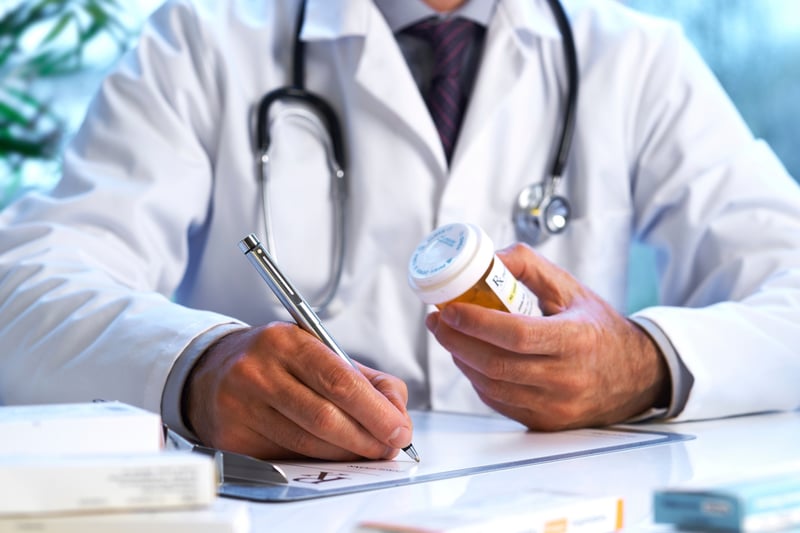Why Naloxone Rescue Kits are Being Co-Prescribed with Opioids

The United States is facing a public health crisis with the overdose rate involving opioids. The Centers for Disease Control and Prevention (CDC) states that in 2016 the number of deaths involving a prescription opioid were five times higher than in 1999.
They also list that all opioids, both prescription and illicit, killed more than 42,000 people in 2016 - totaling more than 115 deaths per day. The drug naloxone, marketed under the brand name of Narcan or Evzio, is a drug that reverses the effect of an opioid and can prevent an opioid overdose death when given within a proper time frame.
The media reports almost daily on the growing number of opioid overdoses and the increased demand and use of naloxone. Many of these reported cases are from users of an illicit form on an opioid, heroin. If naloxone is being used to help people who have overdosed on heroin, why are doctors prescribing it and recommending it to patients with chronic pain who take prescription pain medications?
What is an opioid and why is there a risk of overdosing?
An opioid is a drug that sits on receptors in the brain. When the opioid is on these receptors it will help to decrease the body’s perception of pain and may produce a euphoric feeling. These receptors also affect other regions of the body, including the stomach by slowing digestion, the lungs by suppressing coughing and slow breathing, and can cause a decrease in blood pressure. Opioid overdose deaths occur when the drugs act on the respiratory system and the person stops breathing.
Some commonly prescribed opioid medications include Percocet, Vicodin, Norco, morphine, oxycodone, fentanyl, and Oxycontin. Non-prescription opioids include heroin.
Chronic use of opioids can cause the body to become tolerant or physically dependent to the drug. Opioid users find that even if they are taking a medication as prescribed, the body may require higher, more frequent doses to have the same effect to alleviate pain and prevent the body from showing withdrawal symptoms. Opioid withdrawal symptoms may make the person feel very uncomfortable ranging from flu-like symptoms to feeling like the person is going to die, however, opioid withdrawal is not deadly.
Accidental or unintentional overdoses due to prescription opioids can be linked to the flowing reasons:
- Incorrect dose prescribed
- Increased dose of medication
- Taking more medication than prescribed, by accident - due to increased pain, or for a euphoric feeling
- Taking opioids in combination with other system depressant drugs such as alcohol, muscle relaxants, or sleep aids
- Misuse of opioids by someone who has not been prescribed the drug
- Accidental exposure or consumption of an opioid by a child
What is naloxone?
Naloxone is an opioid antagonist, which means it blocks the effect of an opioid in the body. When given to a person with a suspected opioid overdose, naloxone may allow for an unresponsive person to be woken up, or a person who is not breathing to be able to breathe on their own.
Naloxone should be used in a suspected opioid overdose as soon as possible. Naloxone is a fast acting product that does not stay in the body for long periods of time.
Naloxone is available as an injection, as an auto-injector called Evzio, and a nasal spray called Narcan. Naloxone can be administered by a health care professional, an emergency response team, or a person with no medical training. Naloxone generally comes with two doses, which is usually enough to help the person who has had a suspected overdose with enough time to call 911 to get emergency assistance. The devices available are easy to use and in some instances children have been able to administer it in an emergency situation.
Naloxone has a very low risk of harm in adults and children and can only affect a person with opioids in their system. If a person who had a suspected opioid overdose, but had no opioids in their system, and was administered naloxone, they would not experience any reversal and there would be no side effect or danger with using naloxone.
So why are doctors co-prescribing naloxone with opioids?
The bottom line is safety.
When a prescriber co-prescribes naloxone he or she is not implying the opioid user is going to intentionally abuse or overdose on the medication, they are providing a rescue option in case of an accidental overdose. In an emergency opioid overdose situation every second is precious to help prevent an overdose death. Those living in rural areas that are far away from medical help are more at risk of a death in an emergency overdose situation. Having a naloxone emergency rescue kit available at home could save a life.
Prescribers will also co-prescribe naloxone with the awareness that opioids may fall into the hands of someone who has not been prescribed the medication. This can be a very risky situation and having naloxone on hand for this reason is very important.
Many patients will never use the naloxone rescue kits that are prescribed. For many years patients took opioid medications without a rescue on hand. However, with naloxone emergency kits readily available, it is advisable to have a kit on hand. Prescribing trends have changed to make opioid use safer. The availability of naloxone emergency kits has impacted this trend to allow for prescribers and patients to feel safer about chronic use of opioids and the risk of having opioids at home.
Other Posts You Might Be Interested In
Subscribe to email updates
Stay up-to-date on what's happening at this blog and get additional content about the benefits of subscribing.


